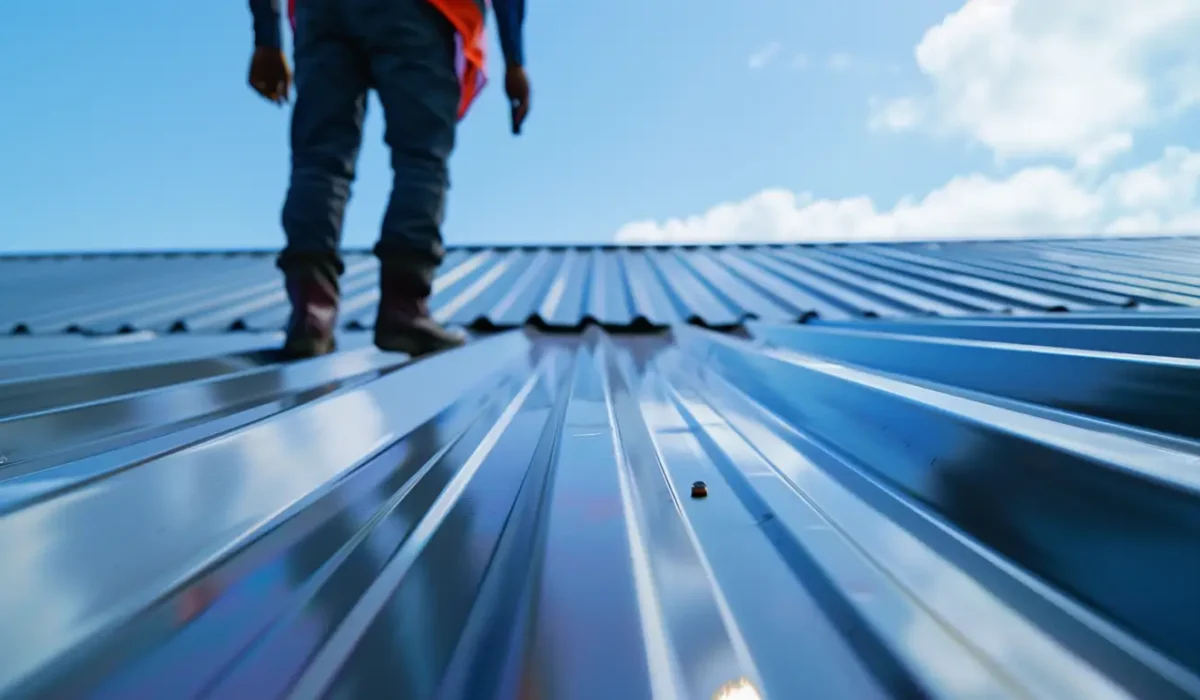Your roof works silently year-round, shielding your home from harsh sun, heavy rain, wind, and debris. But like any essential part of your house, it requires regular attention to perform at its best. For homeowners in Grapevine, TX, where weather conditions can swing from searing summer heat to violent hailstorms, staying on top of roof maintenance isn’t optional — it’s a necessity.
This practical guide will walk you through everything you need to know about maintaining your roof, scheduling inspections, and preventing costly repairs down the line.
Why Roof Maintenance Matters
Your roof may look solid from the ground, but hidden problems can lurk beneath the surface. Small issues like a missing shingle or cracked flashing can quickly turn into major leaks, mold growth, or structural damage. Regular maintenance helps:
- Prolong the lifespan of your roof
- Prevent expensive repairs and water damage
- Maintain energy efficiency and insulation
- Ensure warranty compliance
- Prepare for insurance claims if storm damage occurs
In short, a well-maintained roof saves you money and stress over time.
How Often Should You Inspect Your Roof?
Experts recommend inspecting your roof at least twice a year — once in the spring and again in the fall. These seasonal checks help catch damage from the prior months and prepare your roof for upcoming weather conditions. You should also inspect your roof after any significant storm, especially if hail or high winds were involved.
That said, never walk on your roof yourself. It’s not only dangerous, but it can also cause unnecessary damage. Use binoculars from the ground or hire a professional roofer for a comprehensive inspection.
What to Look for During a Visual Inspection
During your own visual inspections (from the ground), watch for these warning signs:
- Missing, cracked, or curling shingles
- Sagging roof lines
- Rusted or damaged flashing around chimneys and vents
- Granules in gutters or at the base of downspouts
- Moss or algae growth on the roof surface
- Blocked or overflowing gutters
- Water stains on interior ceilings or walls
If you notice any of these issues, it’s time to bring in a trusted professional for a closer look.
The Benefits of Professional Roof Inspections
A professional roof inspection goes far beyond what you can see from the ground. Roofing contractors are trained to identify subtle signs of wear, structural issues, and moisture penetration that could lead to major damage if left unchecked.
Local experts like KangaRoof in Grapevine, TX offer detailed inspection reports, including photos, repair recommendations, and an estimate if any issues are found. With certifications like Owens Corning Preferred Contractor and CertainTeed Master Shingle Applicator, KangaRoof ensures inspections are thorough and reliable.
Regular inspections are especially valuable before storm season. If your roof is already weakened, a wind or hail event could cause severe damage. Preventive maintenance now can mean fewer headaches later.
Key Roof Maintenance Tasks to Prioritize
Routine maintenance is simple when broken down into a few essential categories:
1. Keep Gutters and Downspouts Clean
Clogged gutters cause water to back up onto the roof, leading to rot and leaks. Clear them twice a year, and consider installing gutter guards to reduce future buildup.
2. Trim Overhanging Branches
Branches that scrape the roof can wear down shingles or break off during storms and cause damage. Keep trees trimmed at least 6 feet from your roof.
3. Remove Debris from the Roof
Leaves, twigs, and other organic matter can trap moisture and accelerate shingle deterioration. Gently clear debris using a soft broom or leaf blower.
4. Check for Moss and Algae
Algae streaks or moss patches may seem cosmetic, but they retain moisture and weaken your roof over time. Use approved cleaning products or contact a roofer for safe removal.
5. Monitor Ventilation and Insulation
A hot attic causes shingles to age faster and can lead to moisture buildup. Ensure your attic is properly ventilated and insulated to extend the life of your roofing materials.
When to Schedule Repairs
If your inspection uncovers damage — even small issues — schedule repairs promptly. Ignoring minor problems allows them to worsen and increases your risk of water intrusion.
Common minor repairs include:
- Replacing a few missing shingles
- Resealing flashing
- Patching small leaks
- Reinforcing weak decking areas
Your roofer can determine if a repair is sufficient or if a replacement may be on the horizon.
Prepare for the Unexpected
In Texas, storms often come without much warning. A well-maintained roof is your best defense against damage. However, if your roof is ever impacted by hail or wind, your inspection and maintenance records can help streamline your insurance claim.
Contractors like KangaRoof in Grapevine, TX work closely with insurance companies to document pre-storm conditions and post-damage reports. This can result in faster approvals and better coverage for your repairs or replacement.
Final Thoughts
Roof maintenance doesn’t need to be complicated—but it does need to be consistent. By keeping your roof clean, inspected, and in good repair, you protect your home, preserve its value, and avoid sudden expenses. In Grapevine’s unpredictable climate, a well-maintained roof is one of the smartest investments you can make.
Read also our blog: All You Need to Know About Hail Damage Claims
